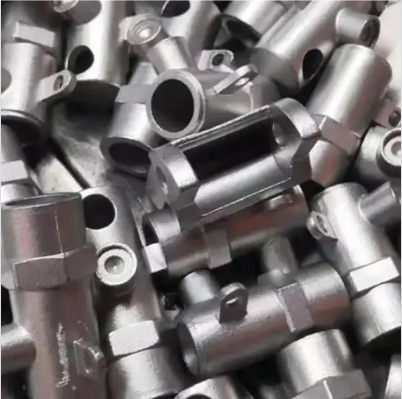Mobile:+86-311-808-126-83
Email:info@ydcastings.com
what is sand casting
What is Sand Casting?
Sand casting is one of the most widely used manufacturing processes for producing metal components. It involves creating a mold from sand to form metal parts, offering flexibility and cost-effectiveness compared to other casting methods. This ancient technique dates back thousands of years and remains popular in modern manufacturing due to its simplicity and versatility.
The Process of Sand Casting
The sand casting process begins by creating a pattern, which is typically made from materials such as wood, metal, or plastic. This pattern is an inverse replica of the desired final product. The pattern is then placed in a flask, which is a container that holds the sand. Sand, often mixed with a binding agent like clay and water, is packed around the pattern to form a mold.
Once the mold is prepared, the pattern is removed, leaving an impression in the sand. This impression forms the cavity into which molten metal will be poured. The properties of the sand used in this process are critical; the sand must have the right grain size, shape, and bonding capability to ensure durability and the ability to withstand the heat of the molten metal.
Next, the molten metal is poured into the mold through a gating system, which is designed to control the flow of metal, minimize turbulence, and ensure that the cavity is completely filled. After the metal has cooled and solidified, the mold is broken apart to extract the casting. This extraction process may involve shaking, breaking, or using a mechanical system, depending on the type of sand used and the complexity of the part.
Advantages of Sand Casting
Sand casting offers several advantages that make it a preferred choice for many manufacturing applications. Firstly, it can accommodate a wide range of metal materials, including aluminum, iron, bronze, and steel. This versatility enables manufacturers to choose the appropriate material based on specific requirements, such as strength, corrosion resistance, and thermal properties.
what is sand casting

Secondly, the sand casting process is highly adaptable for producing both small and large parts. It is particularly effective for low to medium production runs. The tooling costs are relatively low compared to other casting methods, making it economical for custom components and prototypes.
Additionally, sand casting allows for the creation of intricate shapes and features, including internal cavities and fine details. The flexibility in design enables engineers and designers to innovate without incurring significant additional costs.
Applications of Sand Casting
Sand casting is used across various industries, including automotive, aerospace, marine, and construction. It is employed to produce components like engine blocks, housings, and brackets. The ability to create complex geometries makes it suitable for parts that would otherwise be challenging to manufacture using other methods.
Furthermore, the sand casting process has evolved with technology. Modern facilities may incorporate computer-aided design (CAD) systems to improve pattern accuracy and efficiency. Technologies such as 3D printing are also being explored in mold-making, further enhancing the capabilities of traditional sand casting techniques.
Conclusion
In conclusion, sand casting is a foundational manufacturing process that has stood the test of time due to its versatility, cost-effectiveness, and ability to produce high-quality metal components. Whether for industrial applications or intricate designs, sand casting continues to be a crucial process in modern manufacturing, enabling innovation and efficiency across various sectors. As technology advances, the sand casting process will likely continue to evolve, maintaining its importance in the production of metal parts.
-
Why Should You Invest in Superior Pump Castings for Your Equipment?NewsJun.09,2025
-
Unlock Performance Potential with Stainless Impellers and Aluminum End CapsNewsJun.09,2025
-
Revolutionize Your Machinery with Superior Cast Iron and Aluminum ComponentsNewsJun.09,2025
-
Revolutionize Fluid Dynamics with Premium Pump ComponentsNewsJun.09,2025
-
Optimizing Industrial Systems with Essential Valve ComponentsNewsJun.09,2025
-
Elevate Grid Efficiency with High-Precision Power CastingsNewsJun.09,2025











